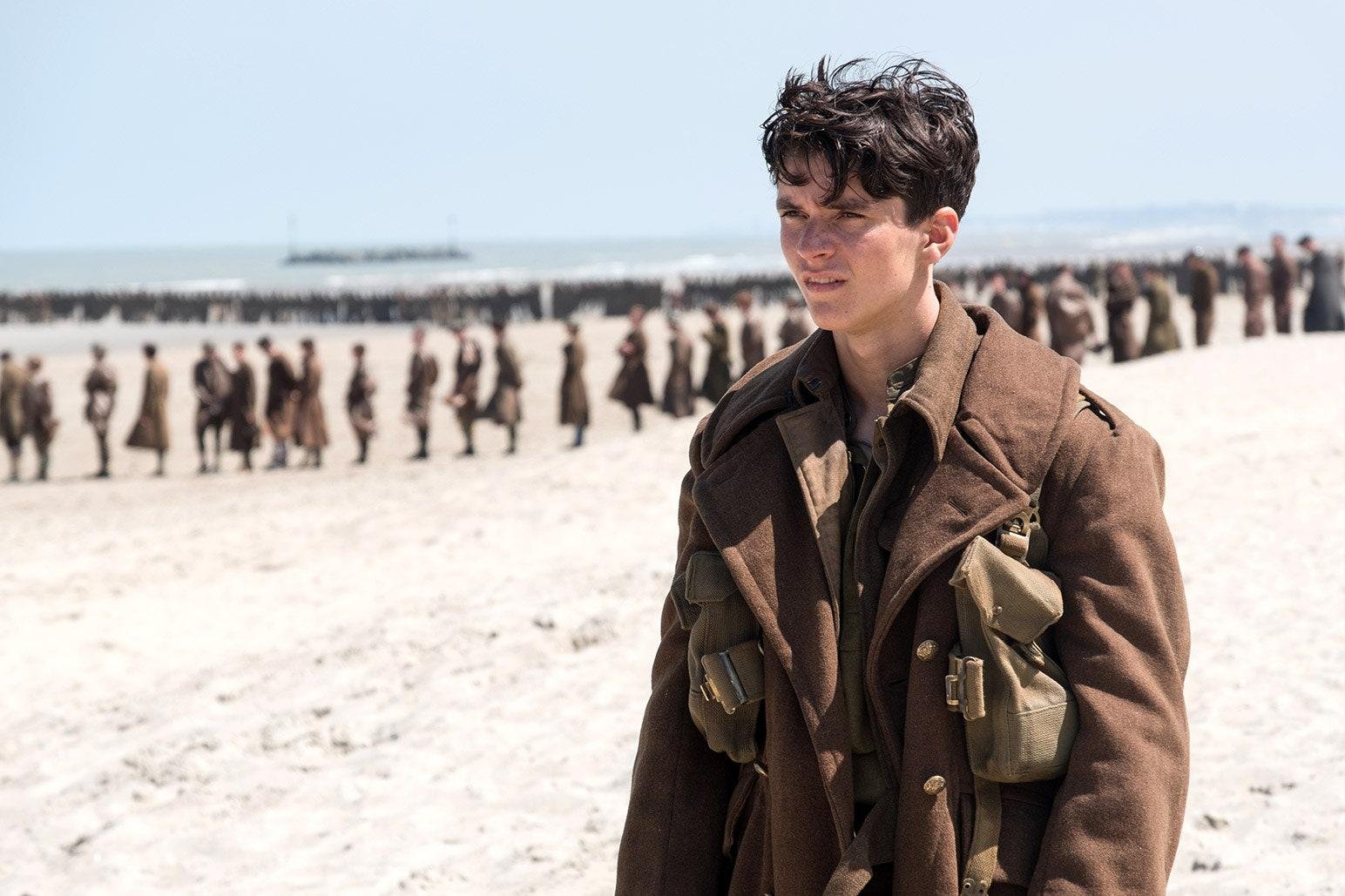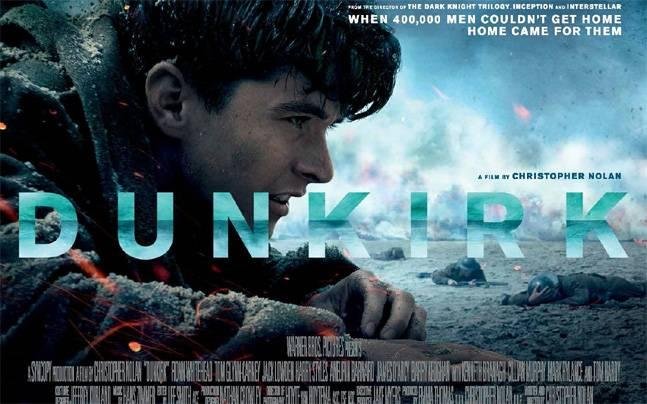Dunkirk: A Gripping Tale of Resilience and Survival on the Big Screen
Grab your popcorn and get ready to experience one of the most intense and awe-inspiring films of the year. Christopher Nolan‘s latest masterpiece, Dunkirk, is a cinematic tour-de-force that tells the story of one of the most defining moments of World War II – the evacuation of over 330,000 Allied soldiers from the beaches of Dunkirk. With stunning cinematography, heart-pumping action, and a stellar cast, this film is a must-see for any fan of war dramas or historical epics. In this Dunkirk movie review, we’ll take a closer look at what makes this movie so special and why it’s already generating Oscar buzz.
Grab your popcorn and get ready to experience one of the most intense and awe-inspiring films of the year. Christopher Nolan‘s latest masterpiece, Dunkirk, is a cinematic tour-de-force that tells the story of one of the most defining moments of World War II – the evacuation of over 330,000 Allied soldiers from the beaches of Dunkirk. With stunning cinematography, heart-pumping action, and a stellar cast, this film is a must-see for any fan of war dramas or historical epics. In this Dunkirk movie review, we’ll take a closer look at what makes this movie so special and why it’s already generating Oscar buzz.

Introduction to the movie Dunkirk
If you’re a fan of war movies, then you definitely shouldn’t miss the epic film Dunkirk. Directed by Christopher Nolan, it tells the true story of the evacuation of allied soldiers from the beaches of Dunkirk during World War II. The movie features an all-star cast including Tom Hardy, Mark Rylance, and Harry Styles. Nolan’s unique storytelling style makes this movie a real masterpiece that will keep you on the edge of your seat from start to finish. With breathtaking cinematography and intense action sequences, Dunkirk is definitely a must-see film.
Overview of the plot and setting
“Dunkirk” is a war film directed by Christopher Nolan, which portrays the events that occurred during the evacuation of Allied soldiers from the beaches of Dunkirk, France, during World War II. The movie takes place in three different timelines, land, sea, and air, and follows the experiences of soldiers, sailors, and civilians as they attempt to survive the chaos and brutality of war. The film’s setting is vividly depicted, with stunning and realistic cinematography that immerses the audience in the heart of the action. Overall, “Dunkirk” is a masterful work of cinematic art that captures the intensity and heroism of one of the most significant moments in history.
Discussion of the main characters
In Dunkirk, director Christopher Nolan masterfully weaves together three storylines that converge during a pivotal moment in World War II. The film’s ensemble cast features standout performances from Tom Hardy, Cillian Murphy, Kenneth Branagh, and Harry Styles in his acting debut. Each character brings a unique perspective to the story, from the young soldiers on the beach desperate to escape to the civilians risking their own lives to help in the rescue effort. Nolan’s signature non-linear storytelling helps to keep the audience engaged and invested in the characters’ individual journeys, making Dunkirk a must-see film for any fan of war dramas.

Analysis of the acting performances
When it comes to analyzing the acting performances in the movie Dunkirk, we have to say that the cast did an outstanding job. From the seasoned veterans such as Mark Rylance and Kenneth Branagh, to the young and up-and-coming actors like Fionn Whitehead and Harry Styles, everyone delivered impressive performances. The lack of dialogue in the film certainly made it a challenge for the actors to convey emotion through their expressions and body language, but they rose to the occasion and gave us some truly memorable moments. Overall, the acting in Dunkirk was top-notch and added to the film’s overall impact and success.
Examination of the cinematography
Examining the cinematography in “Dunkirk” is a fascinating task. Director Christopher Nolan masterfully uses camera angles, lighting, and sound to immerse the audience in the chaos of war. The aerial shots of dogfighting planes and the tight shots of soldiers huddled together on the beach create a sense of urgency and danger. The use of a ticking clock as a recurring sound motif adds tension and urgency to the already intense scenes. The movie is an excellent example of how effective cinematography can elevate a film beyond its basic plot and storyline. Dunkirk is a must-watch for every cinema and movie enthusiast.
Commentary on the use of sound and music
One of the most striking features of Christopher Nolan‘s war epic “Dunkirk” is its masterful use of sound and music. From the opening scene, the sound of a ticking clock sets the tension and drives the pace of the film. The sparse dialogue is complemented by Hans Zimmer‘s haunting score, which builds in intensity as the soldiers’ situation becomes more desperate. Nolan also uses sound design to immerse the audience in the chaos of war, with the constant whir of planes and the deafening explosions adding to the visceral experience. Overall, the use of sound and music in “Dunkirk” is a testament to the power of audio in cinema.

Exploration of the historical accuracy of the film
The historical accuracy of a film is an important aspect to consider when reviewing a war movie. In the case of Dunkirk, director Christopher Nolan‘s interpretation of the events surrounding the British evacuation of Dunkirk in 1940 has been praised for its attention to detail and historical accuracy. From the costumes and props to the language and behavior of the characters, Nolan has made an effort to recreate the atmosphere of the time period. However, some critics have pointed out minor discrepancies in the film’s depiction of certain events. Despite this, the overall accuracy of Dunkirk has been widely acknowledged as a testament to the bravery and sacrifice of the soldiers involved.
Evaluation of the pacing and editing
The pacing and editing of Dunkirk is impeccable. The film’s non-linear narrative jumps back and forth between three different timelines, yet it never feels confusing or disjointed. Director Christopher Nolan masterfully weaves together the various storylines, building tension and suspense throughout the film. The editing is also top-notch, with the action scenes expertly choreographed and seamlessly cut together. Dunkirk is a prime example of how pacing and editing can elevate a film to greatness.
Comparison to other war films
When it comes to war movies, it’s hard to avoid comparisons to other films in the genre. However, Christopher Nolan‘s Dunkirk stands out as a unique and intense cinematic experience. Unlike traditional war films that focus on character development and lengthy battle scenes, Dunkirk is a visceral and immersive portrayal of the evacuation of over 300,000 soldiers from the beaches of Dunkirk. Nolan’s use of non-linear storytelling and immersive sound design puts viewers directly in the chaos of the evacuation, creating a sense of urgency and tension rarely seen in war films. In comparison to other war films, Dunkirk is a masterclass in how to use filmmaking techniques to tell a story in a fresh and innovative way.
Conclusion and final thoughts on Dunkirk
In conclusion, Dunkirk is a visually stunning and intense film that expertly captures the fear, desperation, and heroism of the soldiers and civilians involved in the evacuation of Dunkirk during World War II. Christopher Nolan‘s direction and the incredible performances by the cast, particularly from newcomers Fionn Whitehead and Harry Styles, make this a must-see movie. Although the non-linear storytelling may be confusing for some viewers, it ultimately adds depth and tension to the already gripping plot. Dunkirk is a cinematic masterpiece that deserves all the accolades it has received and is sure to be remembered as one of Nolan’s greatest works.
For more information about Dunkirk movie review, including movie details, cast information, etc..
check out the filmaffinity page.



